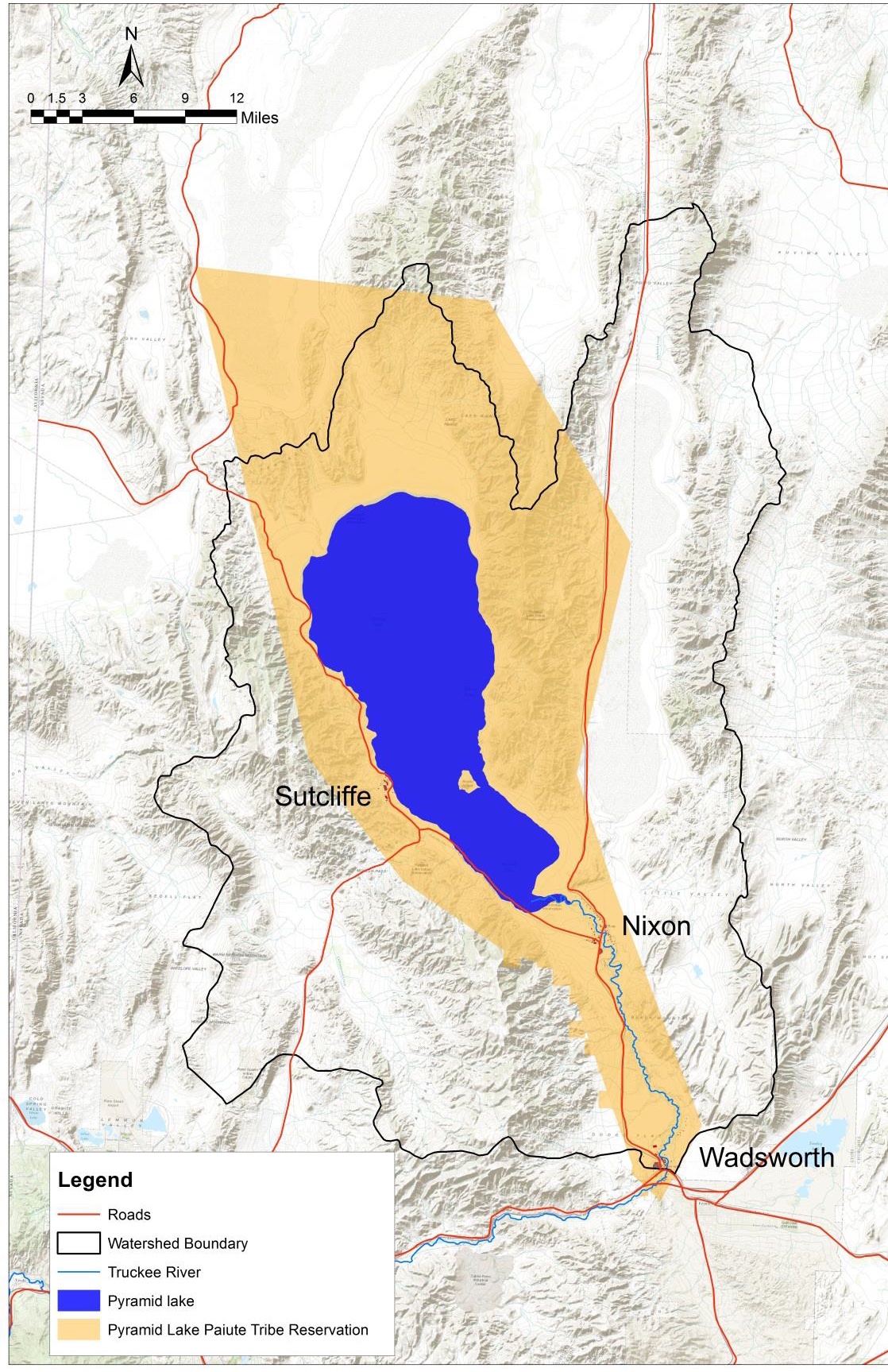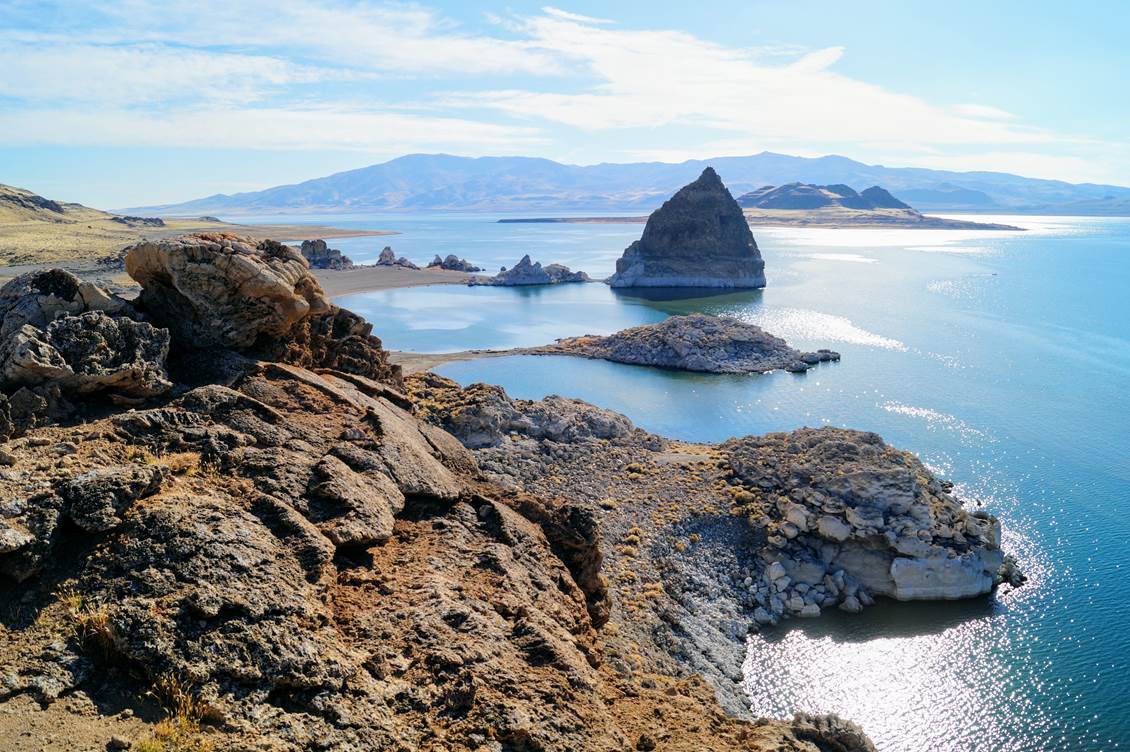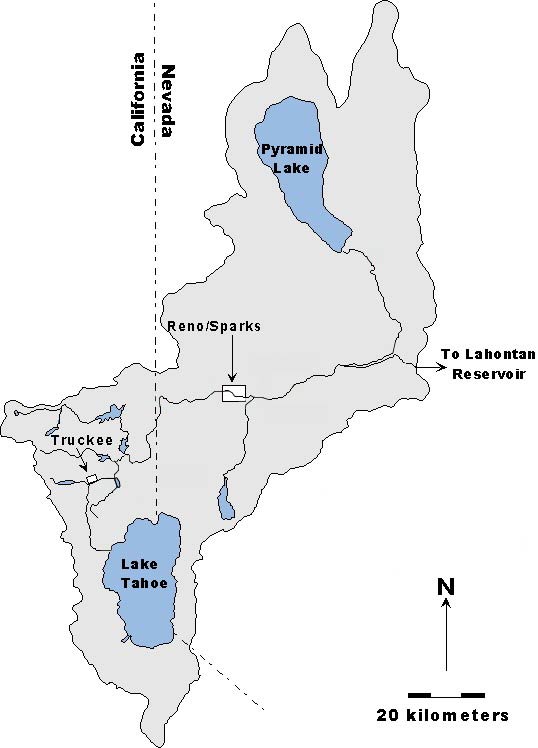
The Pyramid Lake Paiute Reservation
In 1859, administrative actions by the Commissioner of Indian Affairs and the General Land Office withdrew lands from the public domain as a federal reservation for the Pyramid Lake Paiute Tribe. In 1874 an executive order was signed that formalized the reservation of lands. The 322,000-acre (742 square mile) triangular-shaped land base became the Reservation of the Pyramid Lake Paiute Tribe, encompassing the entire lake and extending along the lower Truckee River to the town of Wadsworth.

Pyramid Lake Paiute Reservation Map
The Reservation is home to Pyramid Lake, a large desert terminal lake with a surface area of 188 square miles, as well as the lower Truckee River, the lake's primary water source. The Truckee River watershed extends to the south and west. The city of Reno, Nevada is located approximately 35 miles away and the watershed extend to the eastern Sierra Nevada front and Lake Tahoe. Sources of contamination within the watershed include treated effluent, urban development, agricultural return flows, and mining. Further impacts have been caused by upstream diversions, especially Derby Dam and the Newlands Project, which divert flows from the Truckee River to another watershed to the south. These diversions have lowered lake levels and have affected two Pyramid Lake fish species important to the Tribe's culture and traditional way of life, the Lahontan cutthroat trout (Oncorhynchus clarki henshawi) and cui-ui (Chasmistes cujus).

Photo credit: Autumn Harry
Tribal Water Quality Program
Pyramid Lake and the Truckee River are affected by point and non-point sources (NPS) of pollution. Tertiary treated effluent from the Truckee Meadows Water Reclamation Facility, urban storm runoff, agricultural return flows, septic tanks, mining activities (present and historic) have all impacted surface waters on the lower Truckee River and Pyramid Lake. Upstream diversions altering flow, water pollution and subsequent low flows have affected the recovery efforts of two Pyramid Lake fish species important to the Tribe's culture and traditional way of life. The Lahontan cutthroat trout (Oncorhynchus clarki henshawi) and cui-ui (Chasmistes cujus) are listed as threatened and endangered species. Establishing Tribal Water Quality Standards and long-term monitoring has played a key role in protecting the Reservation's surface waters from further degradation.

Truckee Watershed Map
The Water Quality Program’s mission is to maintain the biological, chemical and physical integrity of surface waters and riparian areas within Pyramid Lake Indian Reservation and improve water quality conditions for the benefit of the threatened and endangered wildlife in Pyramid Lake and the lower Truckee River. In 2007, the Pyramid Lake Paiute Tribe received Treatment in the Similar Manner as a State (TAS) status pursuant to Sections 303 & 401 of the Federal Clean Water Act by the United States Environmental Protection Agency (EPA) to conduct Water Quality Standard Monitoring within the exterior boundaries of the Reservation. Water quality standards are important because they help monitor and assess water quality problems originating from polluted discharges or surface runoff carrying sediment, nutrients, chemicals, or biological pathogens. The Tribe and the EPA approved and adopted Water Quality Standards specific to the lower Truckee River and Pyramid Lake in 2008.